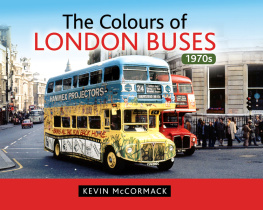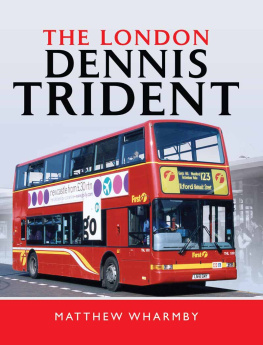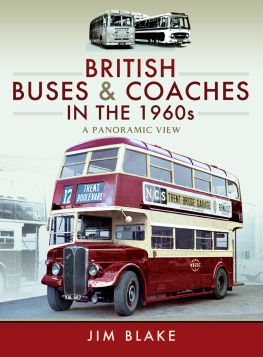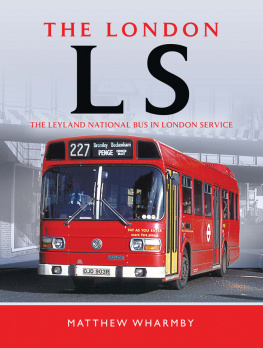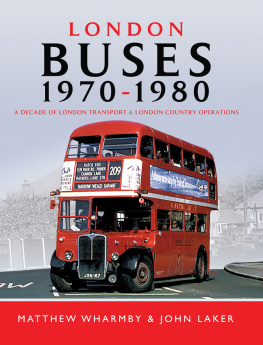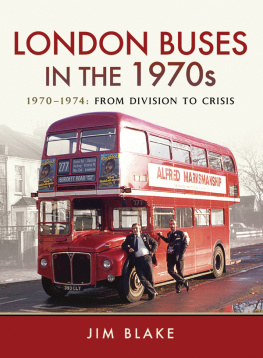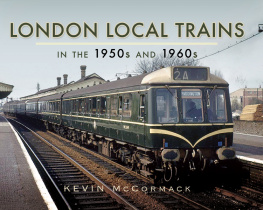
First published in Great Britain in 2016 by
Pen & Sword Transport
An imprint of
Pen & Sword Books Ltd,
47 Church Street,
Barnsley,
South Yorkshire,
S70 2AS
Copyright Pen & Sword Books Limited, 2016
A CIP record for this book is available from the British Library.
ISBN: 978 1 47383 777 5
PDF ISBN: 978 1 47386 802 1
EPUB ISBN: 978 1 47386 801 4
PRC ISBN: 978 1 47386 800 7
The right of Kevin McCormack, to be identified as the author of this work has been asserted by him in accordance with the Copyright, Designs and Patents Act 1988.
All rights reserved. No part of this book may be reproduced or transmitted in any form or by any means, electronic or mechanical including photocopying, recording or by any information storage and retrieval system, without permission from the Publisher in writing.
Printed and bound in India by Replika Press Pvt. Ltd.
Pen & Sword Books Ltd incorporates the Imprints of Pen & Sword Aviation, Pen & Sword Maritime, Pen & Sword Military, Wharncliffe Local History, Pen & Sword Select, Pen & Sword Military Classics and Leo Cooper.
For a complete list of Pen & Sword titles, please contact
Pen & Sword Books Limited
47 Church Street, Barnsley, South Yorkshire, S70 2AS, England
e-mail:
website: www.pen-and-sword.co.uk
Title page: The photographer displays his artistic bent in this view of Tilling ST 922 in Park Lane, passing Hyde Park, in Summer 1972. This veteran vehicle, with well-filled upper deck, is working Vintage route 100. (Bob Greenaway/Online Transport Archive)
Rear cover: Travelling along Top Dartford Road, near Hextable, on its journey from Chelsfield via Orpington, St Mary Cray and Swanley to Dartford on route 477, hired Eastbourne Borough Council AEC Regent V No 68 undergoes a sea change (!) to more inland surroundings on 24 January 1976. (Charles Firminger)
Front cover: In a contrast of colour, RML 2280 races RM 643 to Trafalgar Square as both buses exit Whitehall on 21 April 1973. The Hanimax livery only lasted for seven months, after which RML 2280 advertised Mysons for just over two years before reverting to red livery. (Bob Greenaway/Online Transport Archive)
Contents
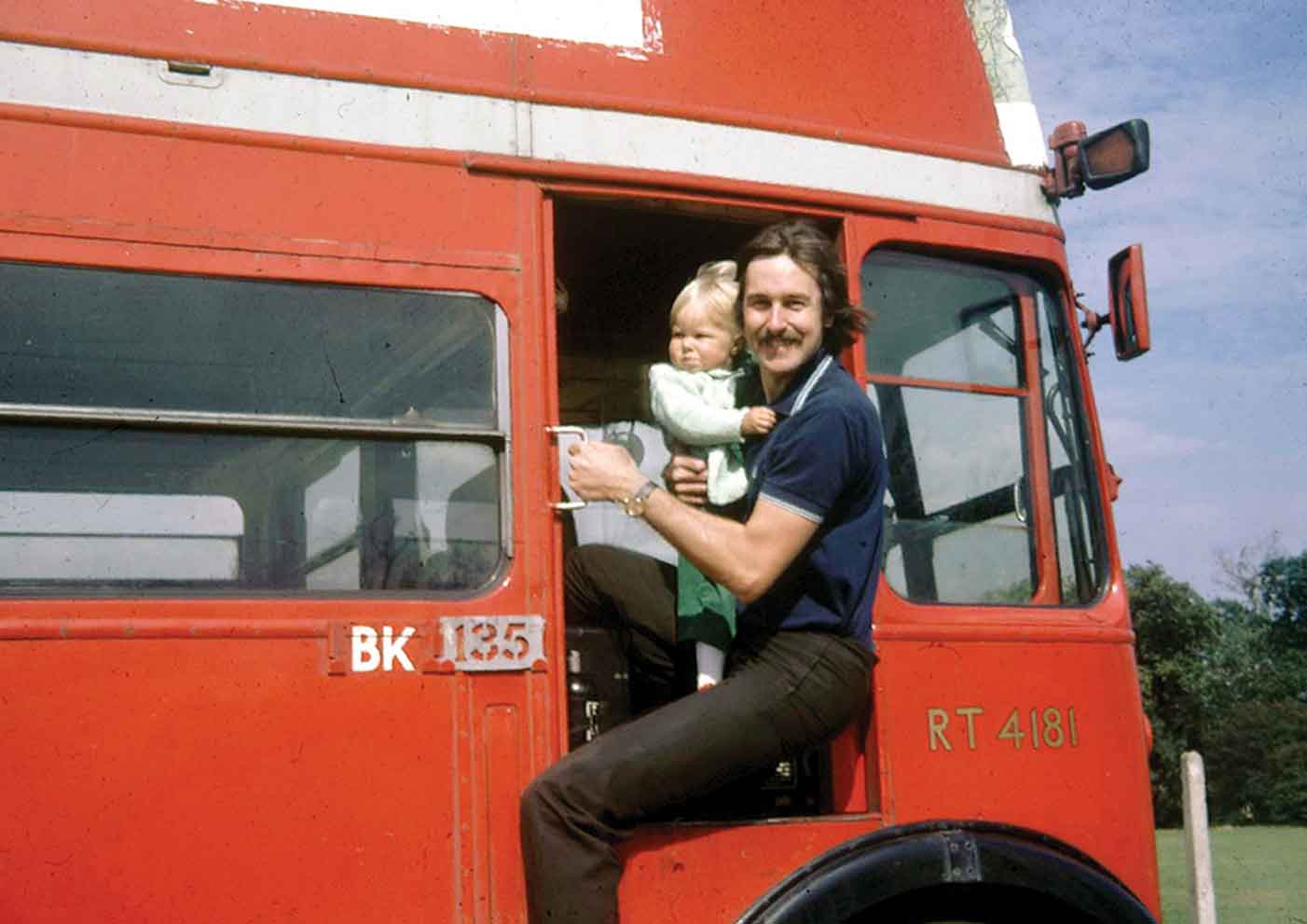
The author, holding his 14-month-old daughter, Laura, poses precariously at the route 87 terminus in Abbey Wood Lane, Rainham, in September 1978.
Introduction
The 1970s was the first decade in Londons history where, following the creation of London Transport (LT) in 1933 and the removal of the independent operators from the streets, buses and coaches were not necessarily painted in the traditional mainly red or green liveries. A Routemaster appeared in 1961 in unpainted aluminium (the so-called Silver Lady) as an experiment but was soon painted red. A sign of the future, however, appeared at the end of 1969, with the painting of the first London bus in all-over advertising livery, presaging a new trend for advertisers to promote their products by colouring vehicles (sometimes garishly) and emblazoning them with pictures and slogans. However, the use of these vehicles was controlled (normally only one per route at a time) so that red livery always predominated. The same control was exercised when commemorative liveries were applied for limited periods, for example, celebrating HM The Queens Silver Jubilee in 1977 or Shillibeers first London omnibus service (1979). All-over advertising continued into the early 1980s. The break-up of LT and subsequent privatisation largely brought it to a halt, but created a different problem operators on franchised routes running buses in their own livery, sometimes with no red in evidence. Operators were then compelled to have their fleets at least 80 per cent red to maintain the Central London tradition expected by tourists and other visitors. With the introduction of the new Routemaster, some all-over advertising has been re-introduced.
A departure from traditional Central Area red or Country Area green also occurred during the 1970s, as a result of an acute shortage of operational buses for LT services and those services handed over on 1 January 1970 to newly formed London Country Bus Services (LCBS), a subsidiary of the National Bus Company (NBC). The shortfall was filled by the temporary use of other operators vehicles in their own liveries. A number of buses in vintage London livery could also be found on the streets during the 1970s.
The pictures in this colour album appear in strict date order and, as the title suggests, the book concentrates on the 1970s. However, as a precursor to that decade the first few photographs, which have a connection with the 1970s, date from the 1960s and the final picture in the book is a tongue-in-cheek look at the 1980s. Most of the images were taken in Central London but, for added variety, there is some material taken in the suburbs and the nearby country area, the yardstick being to keep within, or, very occasionally, just outside the M25 orbital motorway.
While there are a few of my own photographs included, this book would not have materialised had I not been able to use the work of other photographers. The vast majority of pictures have been supplied by the Online Transport Archive, a charity set up to preserve transport films and photographs. A recent collection which has been donated to the Archive comprises photographs taken by Bob Greenaway, an employee of LT who tragically died young. It has been a pleasure to present his excellent work to a wider audience in this way. Those photographs credited to Roger Harrison and Chares Firminger are supplied courtesy of Robert Bridger who holds the originals. As far as is known, none of the pictures appearing in this book has ever been published before.
The text is based on information from a variety of sources, but I must mention in particular two excellent web sites, Ians Bus Stop (maintained by Ian Smith) for vehicle histories and Ian Armstrongs Bus Routes.
We are fortunate that a large number of the types of London bus featured in this book have been preserved in working order, either owned privately or by the two major public museums focussing exclusively on London public transport vehicles: the London Transport Museum at Covent Garden and Acton and the London Bus Museum in Cobham Hall, Brooklands. It is therefore still possible to ride on examples of these wonderful machines at museum events, garage open days and local running days.
Kevin R McCormack, Ashtead, Surrey
November 2014
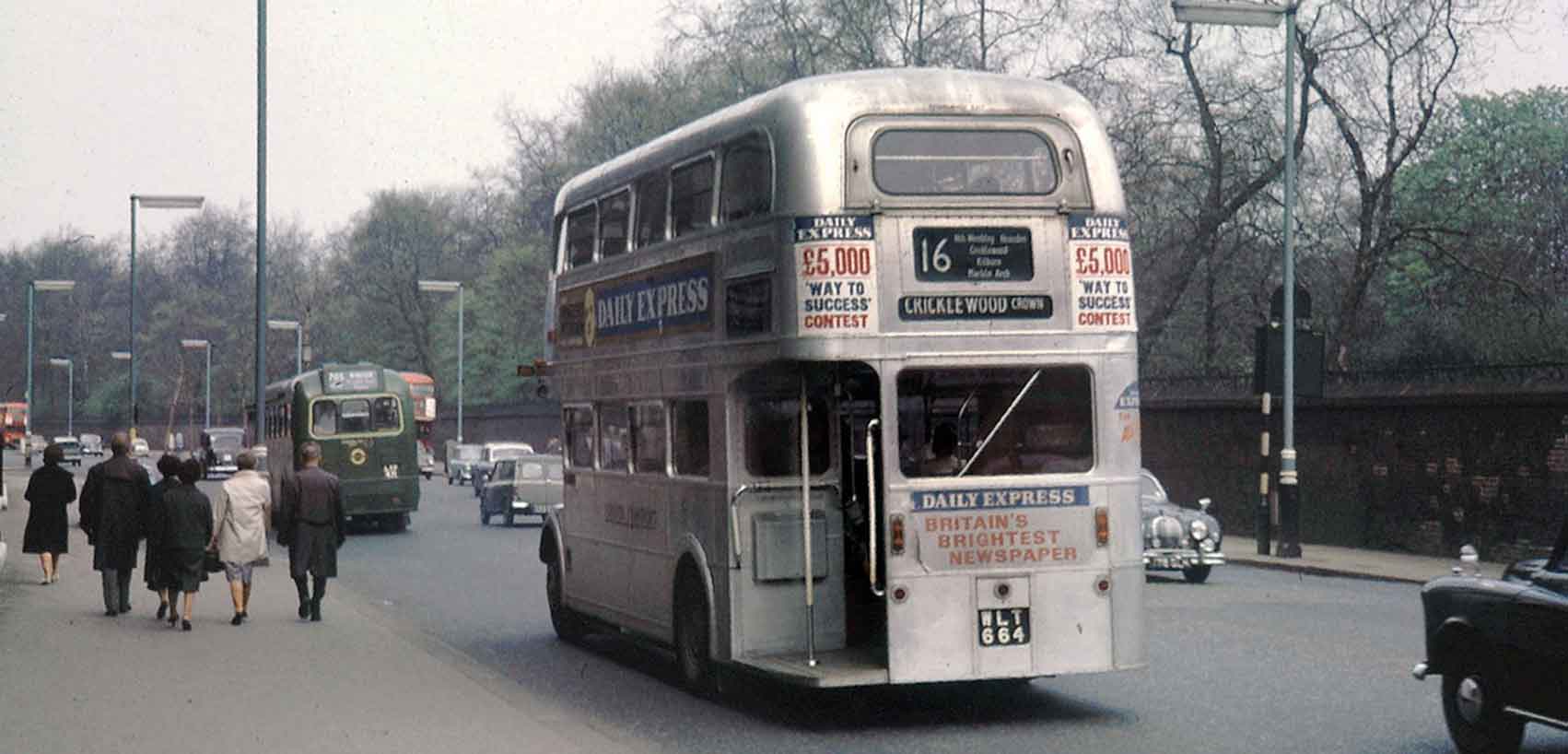
Whereas it is the 1970s, which are normally associated with different coloured London buses, a unique departure from LT Central Area red livery occurred in the early 1960s, when the Silver Lady (RM 664) entered service in July 1961 in unpainted aluminium (except for the fibreglass parts such as the bonnet which were painted silver). Other operators were also trying out this idea because it was thought that economies could be achieved by eliminating expenditure on painting and also reducing running costs through the consequent weight reduction. LT had adopted this approach for some of its Underground stock so, theoretically, it should have been successful for buses but, as this picture near Hyde Park Corner illustrates, the aluminium finish quickly became shabby, not helped by the use of washing plants. In addition, there was concern that as buses often required the fitting of replacement panels following bodywork damage, unpainted vehicles would lack a uniform appearance. RM 664 moved between eleven garages to gauge opinion but the experiment was abandoned after four years, the bus being painted red in August 1965. This view dates from March 1964, during the vehicles two month stay at Cricklewood garage, and depicts RM 664 pursuing RF 120 on a 705 Green Line working. The body of RM 664 was subsequently fitted to RM 577, which has been preserved, although it has not proved practicable to return it to its unpainted aluminium condition.
Next page
